

Vol. 38 (Nº 32) Año 2017. Pág. 7
Andrey Bondoevich KILADZE 1
Recibido: 04/02/2017 • Aprobado: 12/03/2017
2. Research design and methods
3. Agrologistics as the science and type of practice
4. Ancient history of agrologistics
5. Agrologistic chain and its characteristic
6. Perspective trends of agrologistics and food security problem
ABSTRACT: The agrologistics key provisions as the science and the practice area are discussed. The etymology and definition of agrologistics, the object and subject of the science, the peculiarities of agricultural material flow, as well as the classification of agrologistics on a territorial scale (micro-, meso-, and macro- logistics) are discussed. In presenting the historical facts, the emphasis is made on the ancient period covering the primitive society, widely using the energy of pack animals for freight transportation. The information on the first wheeled carts is provided. The information about ancient containers (amphora, dolium, and pithos), which were used for the foodstuffs transportation, is provided as part of the historical review. The typical agrologistic chain is described within the framework of modern agriculture, including the following stages: the primary sources of agricultural raw materials, collection and gathering, storing, deep processing to the state of goods, distribution of goods, consumption of goods. The article presents current agrologistics trends considered taking into account the problem of food security. |
RESUMEN: Se analizan las disposiciones claves de agrologística: la ciencia y la práctica. Se discute la etimología y definición de la agrologística, el objeto y el tema de esta ciencia, las peculiaridades del flujo de materiales agrícolas, así como la clasificación de la agrologística a escala territorial (micro, meso y macro logística). Al presentar los hechos históricos, se hace hincapié en el período antiguo que abarca la sociedad primitiva, utilizando ampliamente la energía de los animales de carga para el transporte de mercancías. Se proporciona la información sobre los primeros carros de ruedas. La información sobre los contenedores antiguos (ánfora, dolio y pithos), que se utilizaron para el transporte de los alimentos, se proporciona como parte de la revisión histórica. La cadena agrológica típica se describe dentro del marco de la agricultura moderna, incluyendo las siguientes etapas: las fuentes primarias de materias primas agrícolas, recolección y recolección, almacenamiento, procesamiento profundo al estado de bienes, distribución de bienes, consumo de bienes. El artículo presenta las actuales tendencias agrologísticas consideradas teniendo en cuenta el problema de la seguridad alimentaria. |
The system of agro-industrial complex (hereinafter – AIC) includes a variety of production and commercial and cooperation ties between different economic entities engaged in growing crops and breeding farm animals, harvesting and primary processing of plant and animal raw materials, and processing of agricultural products to the state of the finished product. Such a system requires a fairly harmonious interaction, conjugated with timely delivery of agricultural products from one contractor to another, which is achieved through the activation of agro-industrial logistics. It is the movement of material flow related to the transport of agricultural products, which provides full coverage of the population needs in essential foods providing human physiological needs. In this regard, we can say that in terms of high-intensity consumption it is not enough only to produce and process agricultural products. The moment of timely delivery acquires a crucial role in some cases. It becomes obvious that agrologistics is an important competitive advantage for companies aimed at uninterrupted supply of their products to an intermediate or final consumer, and also acts as an important factor in ensuring the food security of the country.
Today we can speak of a substantial elaboration of issues related to the concept of the AIC products supply chain management both regionally and on a global scale of distribution of agricultural raw materials, which is shown in a study published under the auspices of the Food and Agricultural Organization of the United Nations (Van der Vorst, Da Silva & Trienekens 2007).
The purpose of the paper is to bring the key provisions and early historical facts related to agrologistics as the sphere of practice and science. Given the very weak elaboration of the agrologistics theoretical issues in the literature, the proposed material by certain provisions is characterized by a certain level of scientific novelty and practical significance.
The research design has the following logic of the material presentation: (1) discussion of the agrologistics definition as a science and practice, (2) provision of brief details of ancient history of agrologistics, (3) description of the key stages of the agrologistic chain, (4) analysis of current trends of agrologistics in agriculture considered in the context of food security.
We used the monographic method, suggesting the involvement of various literary sources for the discussion of the presented agrologistics concept. The information on the plates, stands and tags of museum and archaeological complexes of Paphos (Cyprus), Troy (Turkey) and Caesarea (Israel), the Moscow Museum and the Pushkin State Museum of Fine Arts (Russia), the British Museum and the Victoria and Albert Museum (UK), Museum of Rimini (Italy), Saint Neophytos Monastery (Cyprus) served as the historiographic base. The paper contains the original photos made by the author.
Agroindustrial logistics or agrologistics is an effective system of material flow, from the sources of origin of agricultural production to the end-users. This is its practical value. The etymological term "agrologistics" goes back to the two Greek concepts − "agros", which could mean a field, arable land, or land, and "logistike", which can be interpreted as the art of calculation and reasoning. In the interpretation provided, the agrologistics is literally connected with the distribution of agricultural products, and in a broader sense – with the creation of the most optimal system of movement of all kinds of agricultural products on the product distribution chain not only cost-effectively but also with the achievement of high standards of service, aimed at the sphere of consumption.
If we consider agrologistics as a science, it is notable for the distinctive character of the object and subject of study that brings the methodological features to this logistic direction, coupled with the specific nature of the promotion of material flow. If the object of agrologistics study is agricultural products at different stages of its life cycle, the subject of research is the system of control of this material flow. Many AIC professionals are involved in the agrologistics system, who are the subjects of agrologistic activity. We believe that a wide range of professions, involved in the framework of promotion of agricultural products on the logistics channels, makes this research area popular for the study, which will ensure the most effective management in the agricultural supplies.
It is obvious that raw materials of vegetable and animal origin serve as the material flow, which while passing the primary processing stage and the subsequent deep processing becomes a full-fledged food or non-food product, having a specific functionality and meeting safety requirements. All participants in the process of treatment and processing of agricultural products shall see the agroindustrial logistics as an effective and well thought-out system aimed at the fast and reliable transportation of agricultural products. It is believed that the logistics costs represent one of the major cost items within the cost of goods. That is why so important task is assigned to the optimization of the supply chain, aimed at reducing the level of mediation, as well as the choice of the most efficient modes of transportation, packaging and labeling, which significantly reduces the inevitably rising economic costs.
Material flow differs with the specific properties and state of aggregate, so the physical characteristics of the agricultural raw materials require special selection of micrologistical manipulations and subsequent transportation, which is important for maintaining a high quality of transported vegetable and animal products. For example, the transport of cattle to the meat-processing plant should be carried out in specialized cattle trucks, and delivery of carcasses and meat products is carried out within the refrigerated shipping. Due to dry and loose consistency, cereal crops are transported in bulk in auto-grain carriers, which can be of various modifications – side, tipper and as tanks. Milk has a liquid aggregate state, so it is transported in tankers.
The agrologistic activity can be carried out at several levels in terms of territorial scope determining the movement of a material flow at different distances. So, the micrologistics implies the implementation of various manipulations with the agricultural supplies within separate economy, warehouse, intrashop premises at the enterprise or the loading and unloading on transport. An example of a micro-level in agrologistics system may be grazing or slaughtering, collection, processing, refining and storage of grain and grain products, packaging of sheep wool into bales, etc. In this regard, micrologistics is connected with local peculiarities of the impact on the agricultural material flow. Mesologistics is characterized in that the movement of agricultural products goes beyond the scope of a single economic entity and is associated with intra-urban, inter-district, inter-city, or interregional movement of material flow, but within a single state's borders. In this sense, it is important to observe the mode of transport and delivery times, as in some cases this category of goods differs by a limited shelf life. Macro-logistics involves cross-country circulation of agricultural products, which is implemented in the framework of export-import operations. Let us consider macrologistics using Russia as an example. First, these types of delivery can be made both between the countries of the near abroad and between the far-abroad countries. Secondly, at present Russia is part of the Eurasian Economic Union (hereinafter – EAEC), which also includes countries such as Belarus, Kazakhstan, Armenia, and Kyrgyzstan. As part of this regional integration, a single economic space was formed, which implies free movement of goods, people, and capital. In this context, the customs statistics keeps separate records of transactions, taking into account the mutual trade between the states within the EAEC, and the foreign of the whole integration trade bloc with third countries. In addition, the information on foreign trade is provided within the framework of customs statistics in the context "EAEC state – third country", allowing to see the contribution and foreign trade activity of each EAEC state. We believe that for the successful conduct of meso- and macro- logistics the problem of developing the most optimal schemes of routes, as well as the selection of certain types of vehicles, plays the most important role.
Agrologistics as the practical basis of economic activity has arisen as lately as in the pre-state society based on tribal relations. For people, the need to transport and move goods has always existed. That is why initially, to optimize their working lives, the people have adapted as a "driving force" the overcoming the space of economically useful animals, which passed the taming and domestication stage (oxen, donkeys, horses and camels). Ancient artifacts, speaking about the active use of animals, are shown in Figure 1-5.
The problem of land movement of harvest, food, and water has first been solved through pack animals, which were actively used in different parts of the world. The role of animals with the necessary working qualities is disclosed in more details in the paper of Shnirelman "Production Conditions of Decomposition of Primitive Society" (1988). So, goats and sheep loaded with heavy loads are still used in the Eastern Kashmir and Western Tibet. Since the VI-V millennium BC, for the transportation of goods (such as wineskins with water) in the territory of the Sahara, people began using oxen and bulls, which were also used for riding. In Palestine, since the end of V and up to the middle of IV millennium BC, donkeys served as the primary pack animals, which transported water and dairy products. At about the same time, referring to the IV millennium BC, the population of Tripoli culture and Southern Mesopotamia used sledges with log and then with skid planks, in which the bulls were harnessed. This allowed to carry heavier loads; however, against a background of increased loads, the pathologies of the skeletal system developed in bulls. Researchers believe that the emergence of wheeled carts, which have retained their basic functionality to this day served as a real revolution in the initial transportation means of the people. The homeland of carts can be both Mesopotamia, and South-Eastern Europe, as among scholars there is no consensus on this point. However, the findings of clay models of wheels are referred to the end of V – the middle of the IV millennium BC. So, in Central Asia (III-II millennium BC), first the oxen and donkeys were harnessed the carts, but later they were replaced by Bactrian camels, which were then replaced by horses. The north of Africa is characterized by a different order of use of draft animals. At first, the Egyptians made extensive use of chariots harnessed of horses (13th century BC), and only much later the herders started using bulls in wheeled carts, and the horses obtained exclusively the riding specialization, and camels were almost never used in carts (Shnirelman 1988).
Figure 1. Copies of the Sedlovina Mountain Petroglyphs (Krasnoyarsk region) depicting the chariot.
The Neolithic-Early Bronze Age. III – early II Millennium BC. V.F. Kapel’ko. Moscow
City Museum. Moscow. Photo by A.B. Kiladze
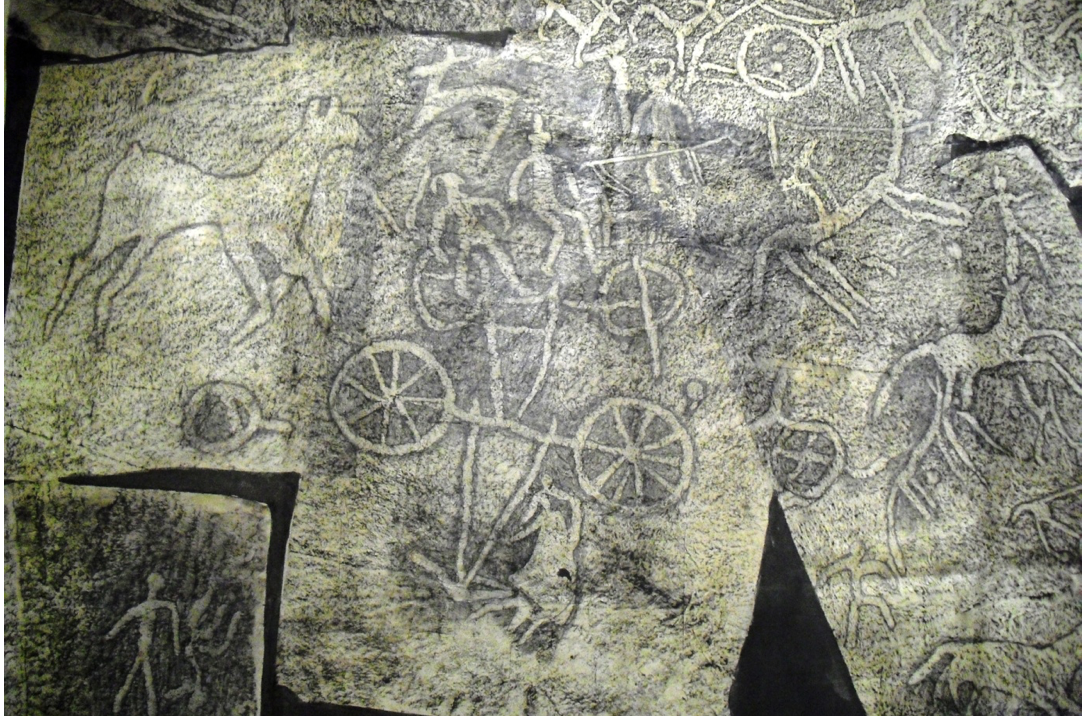
Figure 2. Terracotta horses and riders. 580-550 BC. From Tanagra in
Boeotia. British museum. London. Photo by A.B. Kiladze
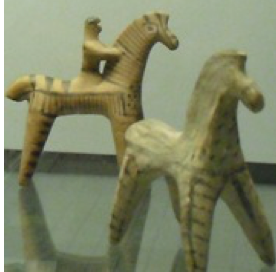
Figure 3. Prisoners on a donkey cart. Terracotta campana relief. Rome. 1st century BC.
The Pushkin State Museum of Fine Arts. Moscow. Photo by A.B. Kiladze
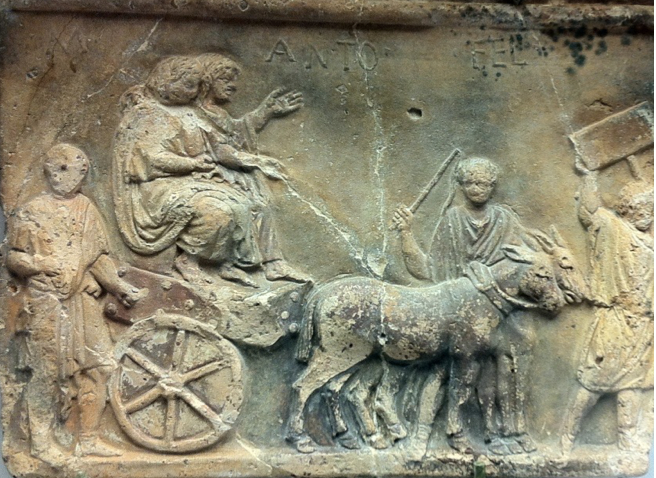
Figure 4. The carriage, ox and the carriage driver. 25-220 AD. Eastern Han.
Victoria and Albert Museum. London. Photo by A.B. Kiladze
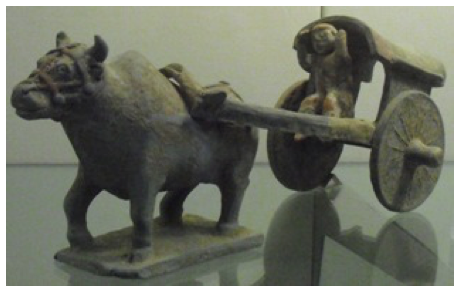
Figure 5. Icarius, holding the reins of oxen harnessed to a two-wheeled carriage − a cart filled with wineskin.
Fragment of "Icarius and Dionysus" mosaic. The end of 2nd – beginning of 3rd century AD.
The House of Dionysus. Paphos Archaeological Park. Paphos. Photo by A.B. Kiladze
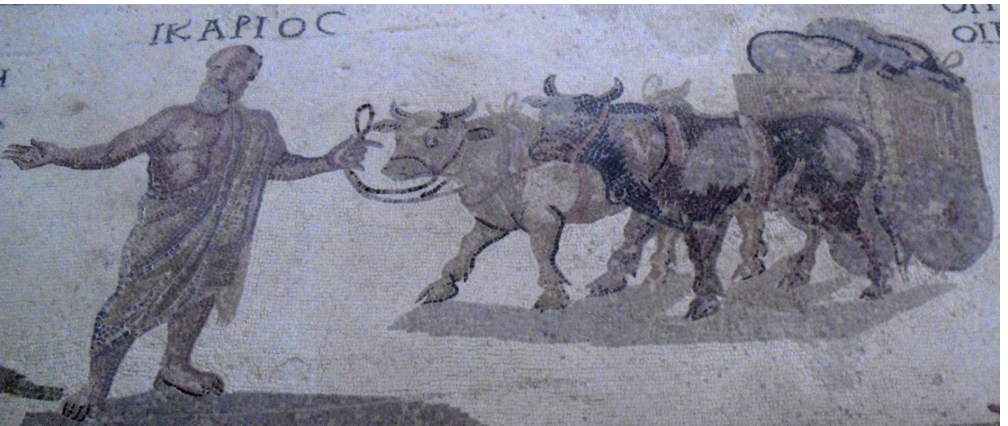
It is known that already in ancient Rome there existed the logistics professionals involved in the distribution of food supplies (Samolayev 2008). In the system of early agrologistics, the importance was also given to the transport and consumer packaging, which was absolutely necessary to preserve the quality of transported foodstuffs. The amphorae were the primary packaging at the time. A typical amphora is a ceramic jar with two handles and a conical base, which was used for storing and transporting olive oil and wine. In addition, the people were also using large-capacity bowl-like ceramic vessels named "dolium", which were generally buried in the ground. They were used for storing liquids (olive oil, wine, and liquamen) and grain. By the way, the similar vessels, but of earlier, ancient Greek period known as pithos (πίθος), were also found in Troy (the territory of modern Turkey), which, among other things, served as transport containers used in maritime shipping.Cereals and dry products could also be stored in underground granaries. In Caesarea, stretched on the Mediterranean coast (modern Israel), there was also a set of six storage facilities established in the Roman-Byzantine period, served either as part of the port trade with export and import goods or for long-term storage of food products sold later in urban markets (Kiladze 2016). The options of antique containers for food storage are shown in Figure 6-9.
Figure 6. Typical amphorae. Rimini Museum. Rimini. Photo by A.B. Kiladze
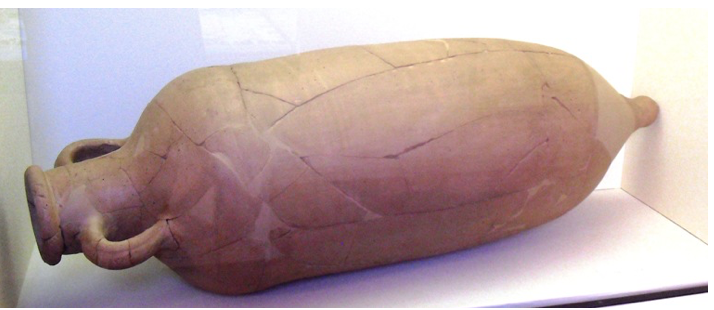
Figure 7. Dolium in the floor. Roman-Byzantine period. Caesarea. Photo by A.B. Kiladze
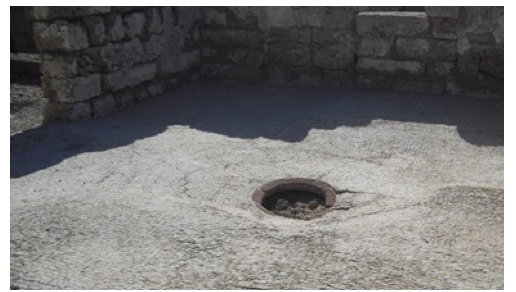
Figure 8. Garden of pithoi. Troy. Photo by A.B. Kiladze

Figure 9. One embodiment of the ancient Cypriot pottery.
This vessel could be used as consumer packaging. 850-50 BC.
Museum affiliated with the St. Neophytos Monastery. Paphos.
Photo by A.B. Kiladze
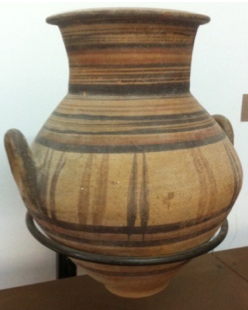
Turning to the analysis of modern infrastructure of agrologistics, it is important to note a number of important features related to the formation of an effective chain of promotion of AIC products, as demonstrated in schematic form (Figure 10).
Figure 10. Key stages of the movement of agricultural material flow
within agrologistic chain (Van der Vorst & Snels 2014)

Looking at the individual stages of movement of the material flow, we can note a number of characteristics and features provided below.
The primary sources of agricultural products include such branches of agriculture as cattle breeding and crop production. Large and small cattle are grown in cattle-breeding complexes and farms, and the agricultural birds – at poultry farms. The process of growing farm animals requires compliance with veterinary and zoo-technical measures, which may also be associated with the logistics conjugated, for example, with the animals grazing on grasslands. Cereal crops require the use of land, so the different fields in this respect act as a natural substrate for growing agricultural crops. Today, for the prediction of real yields and sustainable output of agricultural machinery for its harvesting, it is important to use innovative schemes of account of fertile lands based on the mapping of fields using a geographic information system. So, it is advisable to carry out the aerial photography and video monitoring with the help of unmanned aerial vehicles (drones) (Karpowicz 2016).
Gathering and harvesting of agricultural products is an essential element of effective AIC. In this sense, it is important to abide by the terms of gathering, as well as technology of gathering procedures. Thus, the gathering of cereal crops requires the use of agricultural machinery – combine harvesters, while, in the context of agrologistics, it is advisable to take into account the manufacturer of the machine, the possibility of repair implementation and timing, as well as the level of consumption of fuel and lubricants, the cost of which can reach significant shares in total cost of agricultural products. The delay in the gathering of agricultural supplies may result in damage and will not allow achieving the necessary yield, which will ultimately affect the insufficient level of covering the population's needs in food products. On the basis of agricultural raw materials gathering, a certain store is formed, which is called the harvesting. Harvesting may be accompanied by acceptance of raw materials, its identification, sorting, primary processing, packaging, and labeling.
With proper harvesting, the agricultural products may be subjected to storage with the maintenance of a certain temperature, humidity, ventilation and lighting modes, which are closely linked to the nature of the plant and animal raw materials, its aggregate state, chemical composition and other technological and consumer characteristics. Thus, the grain is stored in elevators, the short-term storage of milk is allowed in tanks and coolers, the carcasses and half-carcasses of farm animals are stored in refrigerators and freezers. With simultaneous storage of the agricultural raw materials having different aggregate states (such as wet and dry materials) on one platform, it is advisable to take into account the commercial neighborhood rule.
The deep processing of vegetable and animal raw materials for the production of food and non-food products involves food and non-food industries, using different technological modes, the main agricultural raw materials, and auxiliary materials, which allows production of a wide range of products to meet the needs of the population. The processor faces such an urgent problem as the choice of raw material supplier since it is preferable to make purchase from such contractor, who would meet the requirements of reliable delivery, optimal timing of the order performance, and the level of the contract price. In production, raw materials are first converted into a semi-finished and then into a finished product with desired properties. It is important noting the intrashop and the internal production movement of material resources that can also be considered as part of agrologistic process. Within the industrial impact, the main raw material may produce large amounts of waste, which it is advisable to introduce into the recycling chain for the production of new products that provides for a low-waste or waste-free nature of production. Waste collection, transportation, and processing are associated with the subject of environmental logistics.
Distribution of products based on vegetable and animal raw materials is part of distribution logistics and is carried out either through an intermediary system or through the direct channels, that do not provide for an intermediary link, which can be considered the best option. At this stage, it is important to observe the "golden mean", because an excessive number of intermediaries will only lead to a substantial increase in the prices of goods. Marketing is associated with the segmentation of consumer goods market, as well as with the promotion of products, aimed at a particular social stratum of consumers with specific consumer expectations of consumption or use of goods purchased, which represents the final link in the system of the agrologistic chain of agricultural material flow. It is important to note that the act of buying and selling at the solvent price occurs only on the background of the real need of the consumer in the product. To achieve significant economic efficiency of the system of marketing promotion of agricultural products it is necessary to create such a product range which would as broadly as possible cover the needs of the most of the population, which will create the conditions for a significant turnover of AIC products. In addition to a wide range of products, allowing for the interoperability and high quality of goods, the consumer expectations are connected with the high standards of service, including visual merchandising, and lack of queues.
Modern trends of conducting of agro-industrial activities are related to the active introduction of the concept of lean production, based on the reduction of a variety of losses due to the optimization of production and management business processes (Grant, Trautrims & Wong, 2015; Myerson 2012). In this case, agrologistics can be seen as the element integrated into the overall chain that determines the intensity level of production and business activities, targeted precisely to the needs of the agricultural products consumer, so the synchronization of supplies with consumer demand will allow achieving savings in an essential way through efficient involvement of industrial and transport resources targeted for a specific order.
The following "points of growth" may be allocated as part of the most promising areas of agrologistics: (1) tactical and strategic planning in the agrologistic chain; (2) evaluation of the effectiveness and synchronicity of collaboration among agrologistic chain partners; (3) assessment and risk management in the supply chain; (4) the formation of an innovative background, based on the use of different economic and mathematical methods and models; (5) the active use of information technologies (Trienekens 2010).
We believe that it is important to take such steps for the Russian farmers by having developed a national agrologistic program that, together with the Food Security Doctrine of the Russian Federation (hereinafter – the Doctrine), adopted in 2010, would make it possible to solve the problem of physical access to food products. Given the significant territorial scale of Russia, such a system of measures is deemed necessary.
The doctrine is aimed at creating conditions that form the basis for the food sovereignty of Russia, while the agrologistic component takes not the last place therein. So, the "General Provisions" section provides a definition of the concept of "Physical accessibility of food", which indicates the role of the commodity distribution infrastructure, which should be so developed as to cover all population centers of the country for the population to be able to purchase a rational range of food products that meet the physiological standards of consumption. It is indicated that in order to achieve the physical availability of food it is important to create conditions for transport accessibility of remote regions, which would guarantee the food supply relatively uniform in time. The mechanisms of provision of food security in terms of organization and management include the need to assess the stability of the food supply of cities and regions that are dependent on external supplies of food (Food Security Doctrine of the Russian Federation, 2010).
In conclusion, we shall note that modern agriculture, focused on the growing needs of the population in the products of plant and animal origin, should fully embed in their production and commercial mode the agrologistic technologies allowing not only to increase profitability but essentially provide the technological basis for food sovereignty of the state.
Doktrina prodovol'stvennoy bezopasnosti Rossiyskoy Federatsii [Food Security Doctrine of the Russian Federation]. (2010). Moscow: Os'-89, pp. 16.
Grant, D.B., Trautrims, A., & Wong, C.Y. (2015). Sustainable Logistics and Supply Chain Management: Principles and Practices for Sustainable Operations and Management. Philadelphia: Kogan Page Ltd. Publishers, pp. 256.
Karpowicz, J. (2016). Above the Field with UAVs in Precision Agriculture: Discover How and Why UAVs are Set to Impact and Change the Way Precision Agriculture Professionals Operate. Las Vegas: Commercial UAV Expo, pp. 6.
Kiladze, A.B. (2016). Logistika v tamozhennom dele. Uchebnoe posobie [Logistics in Customs Procedures. Tutorial]. Moscow: Prospekt, pp. 144.
Myerson, P. (2012). Lean Supply Chain and Logistics Management. Columbus: McGraw-Hill Education, pp. 288.
Samolayev, Yu.N. (2008). Osnovy tamozhennoy logistiki. Uchebnoe posobie [Basics of Customs Logistics. Tutorial]. Moscow: Alfa-M; INFRA-M, pp. 304.
Shnirelman, V.A. (1988). Proizvodstvennye predposylki razlozheniya pervobytnogo obshchestva [Production Conditions of Decomposition of Primitive Society]. In Yu.V. Bromley (Ed.), Istoriya pervobytnogo obshchestva. Epokha klassoobrazovaniya [The History of Primitive Society. The Era of Class Formation]. Moscow: Nauka, pp. 34-35.
Trienekens, J.H., Top, J.L., Van der Vorst, J.G.A.J., & Beulens, A.J.M. (Eds.). (2010). Towards Effective Food Chains: Models and Applications. Wageningen: Wageningen Academic Publishers, pp. 320.
Van der Vorst, J. G. A. J., & Snels, J. (2014).Developments and Needs for Sustainable Agro-Logistics in Developing Countries. Washington, DC: World Bank, pp. 24.
Van der Vorst, J.G.A.J., Da Silva, C., & Trienekens, J.H. (2007). Agro-Industrial Supply Chain Management: Concepts and Applications. Rome: Food and Agriculture Organization of the United Nations, pp. 56.
1. A.N. Severtsov Institute of Ecology and Evolution of the Russian Academy of Sciences Moscow 119071, Russia. Email: kiladze.andrey@mail.ru